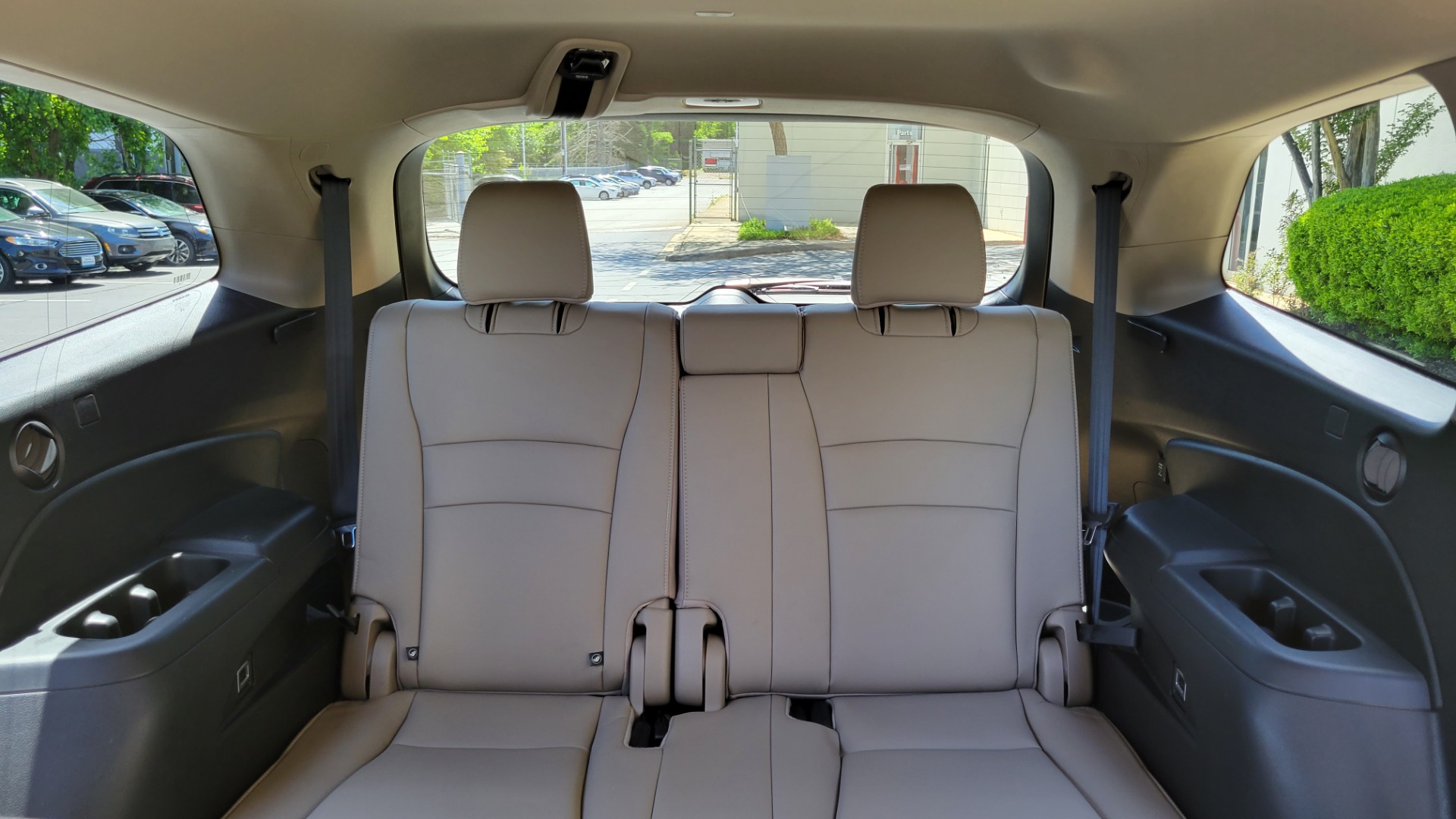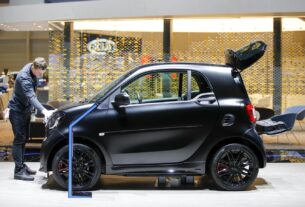As families grow and their needs evolve, the demand for vehicles with ample seating and cargo space becomes increasingly important. One feature that has gained significant popularity in recent years is the inclusion of a third row of seats, providing additional flexibility and accommodating larger groups. Whether you’re planning a family road trip, shuttling the kids to sports practices, or simply need extra space for everyday needs, finding the right car with a third row can make all the difference.
In this comprehensive blog post, we will explore the top cars for sale with third row seats, with a specific focus on the Honda Pilot. We’ll dive into the pros and cons of various options, provide insights on choosing the right car for your needs, and examine the safety features, fuel efficiency, and configurations of these versatile vehicles. Additionally, we’ll highlight the advantages and disadvantages of owning a car with a third row, ensuring you have a well-rounded understanding of this important feature.
You are watching: Top Cars for Sale with Third Row Seats
Honda Pilot: A Comprehensive Guide to Third Row Seating

The Honda Pilot has long been a popular choice among families seeking a spacious, versatile, and capable SUV with third-row seating. With its impressive interior dimensions, advanced safety features, and robust performance, the Pilot has earned a reputation as a top contender in the three-row SUV market.
Seating Capacity and Configurations
One of the primary advantages of the Honda Pilot is its generous seating capacity. Depending on the trim level and configuration, the Pilot can accommodate up to eight passengers, with a comfortable third-row seat that can comfortably fit adults. The second-row seating can be configured with either captain’s chairs or a bench, providing flexibility to accommodate a variety of passenger needs.
Interior Space and Cargo Capacity
In addition to its seating capabilities, the Honda Pilot boasts impressive interior space and cargo capacity. With the third-row seats in place, the Pilot offers a respectable 16.5 cubic feet of cargo space, which can be expanded to a cavernous 83.9 cubic feet by folding down the second and third-row seats. This versatility allows for ample storage for luggage, sports equipment, or other bulky items, making the Pilot an ideal choice for families with active lifestyles.
Powertrain and Performance
Under the hood, the Honda Pilot is powered by a robust 3.5-liter V6 engine, which delivers 280 horsepower and 262 lb-ft of torque. This engine is paired with either a 6-speed or 9-speed automatic transmission, depending on the trim level, and is available with both front-wheel drive and all-wheel drive configurations. The Pilot’s strong powertrain and available all-wheel drive system provide confident handling and impressive towing capabilities, with a maximum towing capacity of up to 5,000 pounds.
Fuel Efficiency
Despite its spacious interior and robust performance, the Honda Pilot maintains a respectable level of fuel efficiency. The front-wheel drive models can achieve up to 20 city/27 highway/23 combined miles per gallon, while the all-wheel drive variants offer slightly lower ratings of 19 city/26 highway/22 combined miles per gallon. These figures are competitive within the three-row SUV segment, making the Pilot a practical choice for families who value both utility and fuel economy.
Safety Features
The Honda Pilot prioritizes safety, offering a comprehensive suite of advanced safety features as standard equipment. These include forward collision warning, automatic emergency braking, lane departure warning, lane keep assist, and adaptive cruise control. Higher trim levels may also include additional safety technologies, such as blind spot monitoring, rear cross-traffic alert, and a surround-view camera system, further enhancing the Pilot’s protective capabilities.
Technology and Connectivity
The Honda Pilot also delivers a well-equipped and technologically advanced cabin. All models come standard with a touchscreen infotainment system, Apple CarPlay and Android Auto integration, and a multi-angle rearview camera. Higher trims offer upgrades such as a larger touchscreen, a premium audio system, and a rear-seat entertainment system, ensuring both the driver and passengers can stay connected and entertained during their journeys.
Pricing and Trim Levels
The Honda Pilot is available in a range of trim levels to suit various budgets and preferences. The base LX model starts at a suggested retail price of around $37,000, while the top-of-the-line Elite trim can reach upwards of $50,000. Between these two extremes, the Pilot offers a variety of intermediate trim levels, including the EX, EX-L, and Touring, each with its own set of features and amenities.
Comparing Cars with Third Row Seats: Pros and Cons

When considering a car with a third row of seats, it’s important to weigh the potential benefits and drawbacks to ensure it aligns with your specific needs and preferences. Let’s explore the pros and cons of owning a vehicle with a third-row seat.
Pros of Owning a Car with a Third Row
Increased Seating Capacity The primary advantage of a car with a third row is the additional seating capacity. These vehicles can accommodate up to eight passengers, making them an ideal choice for larger families or those who frequently transport multiple people, whether it’s for school runs, sports events, or family gatherings.
Flexible Cargo Space Cars with third-row seating often offer impressive cargo space when the rear-most seats are folded down. This versatility allows for a balance between passenger and cargo-hauling capabilities, making them well-suited for a variety of activities, from shopping trips to outdoor adventures.
Improved Comfort and Convenience Many three-row vehicles are designed with passenger comfort in mind, featuring features like climate control for the rear seats, USB charging ports, and even entertainment systems to keep all occupants happy and entertained during lengthy drives.
Cons of Owning a Car with a Third Row
Reduced Maneuverability The added length and weight of a vehicle with a third row can make it less maneuverable in tight spaces, such as crowded parking lots or narrow city streets. This can pose challenges for some drivers, especially when it comes to parking or navigating through congested areas.
Decreased Fuel Efficiency The increased size and weight of a three-row car can result in slightly lower fuel efficiency compared to smaller, two-row counterparts. This may be a consideration for those who prioritize fuel economy or have long commutes.
Limited Accessibility to the Third Row Accessing the third-row seating can be more difficult, particularly for younger children or elderly passengers. Some vehicles may require folding or sliding the second-row seats to reach the rear, which can be inconvenient in certain situations.
Higher Purchase Price Three-row vehicles often come with a higher price tag than their two-row counterparts, as the additional seating and larger size typically translate to a more substantial investment.
By understanding the pros and cons of owning a car with a third row, you can make a more informed decision about whether this feature aligns with your specific needs and preferences.
Choosing the Right Car with Third Row Seats for Your Needs

Selecting the right car with a third row of seats requires careful consideration of various factors, including your family size, lifestyle, budget, and personal preferences. To help you navigate this decision, let’s explore some key elements to consider:
Family Size and Seating Capacity
The size of your family is a crucial factor in determining the appropriate number of seats you’ll need. If you have a large household with multiple children, a vehicle with a third row may be essential to accommodate everyone comfortably. On the other hand, if you have a smaller family, a two-row SUV or minivan may suffice, potentially offering a more compact and maneuverable option.
Cargo Space and Versatility
In addition to seating capacity, the amount of cargo space available in a three-row vehicle is also an important consideration. Evaluate your regular transportation needs, such as transporting sports equipment, camping gear, or bulky items. Compare the cargo volume with the seats up and down to ensure the vehicle can meet your storage requirements.
Driving Conditions and Terrain
If you frequently navigate rough terrain, inclement weather, or other challenging driving conditions, the availability of all-wheel drive or four-wheel drive in a three-row vehicle may be a valuable feature to consider. This can provide enhanced traction and stability, particularly when carrying a full load of passengers and cargo.
Budget and Ownership Costs
Three-row vehicles typically carry a higher price tag than their two-row counterparts. When establishing your budget, factor in not only the initial purchase price but also the ongoing ownership costs, such as fuel efficiency, insurance premiums, and maintenance expenses. Balancing your needs with your financial capabilities is crucial in finding the right three-row car.
Personal Preferences and Driving Dynamics
While functionality is essential, it’s also important to consider your personal preferences and driving dynamics. Evaluate factors like ride comfort, handling characteristics, and the availability of advanced safety and technology features to ensure the three-row vehicle aligns with your driving style and preferences.
By carefully considering these key elements, you can narrow down your search and identify the three-row car that best suits your family’s needs, budget, and lifestyle.
Comparison Table: Top Cars with Third Row Seats
See more : 2024 Ford Bronco Sport A Comprehensive Guide for Chicago Residents
To help you visualize and compare the various options, here’s a table highlighting some of the top cars with third row seats:
| Model | Seating Capacity | Cargo Space (seats up/down) | Fuel Efficiency (FWD/AWD) | Starting MSRP |
|---|---|---|---|---|
| Honda Pilot | 8 | 16.5 cu ft / 83.9 cu ft | 20/27 mpg, 19/26 mpg | $37,000 |
| Toyota Highlander | 8 | 16 cu ft / 84.3 cu ft | 21/29 mpg, 20/27 mpg | $35,855 |
| Chevrolet Traverse | 8 | 23 cu ft / 98.2 cu ft | 18/27 mpg, 17/25 mpg | $29,800 |
| Ford Explorer | 7 | 18.2 cu ft / 87.8 cu ft | 21/28 mpg, 20/27 mpg | $32,225 |
| Volkswagen Atlas | 7 | 20.6 cu ft / 96.8 cu ft | 21/24 mpg, 20/24 mpg | $31,545 |
This comparison table provides a quick overview of the key specifications and features of some of the top-selling three-row vehicles, helping you assess and compare your options more effectively.
Safety Features of Cars with Third Row Seats
When it comes to transporting a larger family, safety should be a top priority. Fortunately, many of the leading cars with third row seats come equipped with a comprehensive suite of advanced safety features to protect all occupants.
Passive Safety Features
Passive safety features in three-row vehicles often include a reinforced body structure, crumple zones, and multiple airbags (including side-curtain airbags that extend to the third row). These elements work together to absorb and dissipate the force of an impact, minimizing the risk of injury to passengers.
Crashworthiness and Structural Integrity The bodies of three-row SUVs and minivans are designed with high-strength materials and reinforced frames to withstand the impact of a collision. This enhanced structural integrity helps preserve the integrity of the passenger compartment, reducing the risk of intrusion and serious injuries.
Airbag Systems Comprehensive airbag systems, including front, side, and side-curtain airbags, are now standard in most three-row vehicles. These airbags deploy strategically to protect occupants in the event of a crash, cushioning the impact and reducing the potential for head, neck, and torso injuries.
Active Safety Features
In addition to passive safety measures, many three-row cars also incorporate a range of active safety technologies to help prevent accidents in the first place.
Collision Avoidance Systems Features like forward collision warning, automatic emergency braking, and pedestrian detection can help detect potential hazards and automatically apply the brakes to mitigate or avoid a collision.
Lane Assistance Technologies Lane departure warning, lane keep assist, and blind spot monitoring systems provide increased awareness and help the driver maintain control of the vehicle, reducing the risk of unintended lane departures or side-impact collisions.
Adaptive Cruise Control This feature automatically adjusts the vehicle’s speed to maintain a safe following distance from the car in front, enhancing safety and reducing driver fatigue on long drives.
Rear-View and Surround-View Cameras Comprehensive camera systems, including a rearview camera and a surround-view camera, provide the driver with enhanced visibility, making it easier to maneuver and park the larger three-row vehicle.
By prioritizing safety features in three-row cars, manufacturers aim to provide families with the peace of mind and protection they need when transporting multiple passengers.
Fuel Efficiency Considerations for Cars with Third Row Seats
When selecting a car with a third row of seats, fuel efficiency is an important factor to consider, as the additional weight and size of these vehicles can impact their overall fuel consumption.
Understanding the Impact of Third Row Seating
The inclusion of a third row of seats in a vehicle typically results in a larger overall size and increased weight. This added mass requires more energy to propel the car, leading to a reduction in fuel efficiency compared to smaller, two-row counterparts.
Increased Weight and Aerodynamic Drag The extra weight of the third-row seats, as well as the larger overall size of the vehicle, adds to the energy required to accelerate and maintain speed. Additionally, the increased frontal area and less-streamlined design can result in higher aerodynamic drag, further contributing to decreased fuel efficiency.
Powertrain Considerations To compensate for the added weight and size, three-row vehicles often feature more powerful engines, such as V6 or turbocharged four-cylinder units. While these engines provide the necessary power, they may not always be as fuel-efficient as smaller, naturally aspirated four-cylinder powertrains found in two-row models.
Strategies for Improving Fuel Efficiency
Automakers have implemented various strategies to improve the fuel efficiency of three-row vehicles, helping to mitigate the impact of the added size and weight.
Lightweight Materials and Design The use of lighter, high-strength materials in the body and chassis, as well as optimized aerodynamic design, can help reduce the overall weight and improve the vehicle’s efficiency.
Advanced Powertrain Technologies Innovations such as turbochargers, direct fuel injection, and stop-start systems can enhance the fuel efficiency of the engines powering three-row cars, helping to offset the increased energy demands.
Transmission Advancements Improved transmission designs, including the incorporation of more gears and advanced shifting algorithms, can help the engine operate in its most efficient rpm range, further enhancing fuel economy.
Hybrid and Electrified Powertrains The integration of hybrid or fully electric powertrains in three-row vehicles is becoming more common, providing a significant boost in fuel efficiency without sacrificing passenger and cargo capacity.
Comparing Fuel Efficiency across Three-Row Models
When evaluating three-row cars, it’s essential to compare the fuel efficiency ratings to find the most suitable option for your needs. The table provided earlier in this blog post offers a comparison of the fuel efficiency figures for several popular three-row vehicles, allowing you to assess and weigh the trade-offs between seating capacity, cargo space, and fuel economy.
By understanding the impact of third-row seating on fuel efficiency and exploring the various strategies employed by automakers, you can make an informed decision that balances your transportation needs with your environmental and financial considerations.
Third Row Seat Configurations in Cars
The versatility of three-row vehicles extends beyond just the seating capacity, with various configurations and features that can enhance the overall functionality and user experience.
Split-Folding Third-Row Seats
Many three-row cars offer split-folding third-row seats, which allow for a more flexible cargo and passenger arrangement. This feature enables you to fold down one or both sides of the third row, providing a balance between seating and storage space as needed.
Advantages of Split-Folding Third-Row Seats
- Increased cargo capacity when one or both third-row seats are folded
- Ability to accommodate a mix of passengers and cargo
- Customizable seating arrangements to suit your specific needs
See more : American cars: Better than ever and pricier, too
Disadvantages of Split-Folding Third-Row Seats
- Potential for a less flat cargo floor when one side is folded
- Slightly reduced third-row seating capacity compared to a full bench
Power-Folding Third-Row Seats
Some three-row vehicles take the convenience a step further by offering power-folding third-row seats. With the push of a button or the activation of a lever, the rear-most seats can be quickly and effortlessly folded, creating a more streamlined cargo area.
Advantages of Power-Folding Third-Row Seats
- Easier and more convenient access to the cargo area
- Seamless transition between passenger and cargo configurations
- Potential for memory settings to automatically adjust the seating positions
Disadvantages of Power-Folding Third-Row Seats
- Additional complexity that may lead to potential mechanical issues
- Higher cost associated with the added convenience feature
- Dependency on power source for operation, which may pose limitations in certain situations
Removable Third-Row Seats
In some three-row vehicles, the third-row seats are designed to be completely removable, offering utmost flexibility in transforming the interior configuration. This feature allows you to maximize cargo space when the additional seating is not needed.
Advantages of Removable Third-Row Seats
- Complete elimination of the third-row seats for maximum cargo capacity
- Easy installation and removal process for added convenience
- Ability to customize the interior layout based on specific requirements
Disadvantages of Removable Third-Row Seats
- Storage space required for the removed seats when not in use
- Potential heavy lifting involved in installing or removing the seats
- Risk of damage to seats if not properly stored or secured during transportation
By understanding the various third-row seat configurations available in cars, you can determine which option best aligns with your usage patterns and preferences. Whether you prioritize versatility, convenience, or maximum seating capacity, selecting the right configuration can enhance your overall driving experience.
Advantages of Owning a Car with a Third Row
Owning a car with a third row of seats offers a multitude of advantages that cater to diverse transportation needs and lifestyles. From accommodating large families to providing extra cargo space, these vehicles are versatile and practical for various situations.
Increased Seating Capacity
One of the primary benefits of owning a car with a third row is the expanded seating capacity it provides. These vehicles can comfortably accommodate more passengers than traditional two-row cars, making them ideal for large families, group outings, or carpooling arrangements.
Versatile Interior Configurations
Three-row cars offer a range of interior configurations that allow for flexible use of space. Whether you need extra seating for passengers, additional cargo room for bulky items, or a combination of both, the adaptable design of these vehicles caters to diverse needs.
Enhanced Cargo Flexibility
Beyond passenger capacity, the presence of a third row enables greater cargo flexibility. With the ability to fold down or remove the rear-most seats, you can create a larger storage area for transporting sports equipment, furniture, luggage, or any other sizable items.
Considering the advantages of owning a car with a third row, it’s evident that these vehicles provide practical solutions for individuals and families seeking increased seating capacity, versatile interior arrangements, and enhanced cargo options. By leveraging the benefits offered by three-row cars, you can optimize your driving experience and adapt to varying transportation requirements effectively.
Disadvantages of Owning a Car with a Third Row
While there are numerous benefits to owning a car with a third row of seats, it’s essential to also consider the potential drawbacks that come with these larger vehicles. Understanding the limitations can help you make an informed decision based on your specific needs and preferences.
Reduced Cargo Space with All Seats in Use
When all seats in the third row are occupied, the available cargo space in the vehicle diminishes significantly. This limitation can be challenging when trying to balance passenger comfort with the need to transport bulky items or luggage.
Limited Legroom and Comfort in Third Row
The third-row seats in many three-row vehicles may offer limited legroom and overall comfort, especially for adult passengers. While suitable for short trips or children, extended journeys in the rear-most seats could result in discomfort and reduced satisfaction.
Maneuverability and Parking Challenges
Due to their larger size and extended body length, three-row cars can present difficulties when maneuvering in tight spaces or parking in crowded areas. Navigating through narrow streets or fitting into compact parking spots may require additional effort and caution.
By acknowledging the disadvantages of owning a car with a third row, you can assess whether these factors align with your typical driving scenarios and priorities. While the drawbacks exist, they can be managed with careful consideration and planning to ensure a positive ownership experience.
Honda Pilot: A Versatile Choice for Families Needing Third Row Seats
As a popular model in the three-row SUV segment, the Honda Pilot stands out as a versatile choice for families requiring ample seating capacity and modern amenities. With its reputation for reliability, safety features, and spacious interior, the Pilot offers a compelling package for discerning drivers.
Honda Pilot: Interior Comfort and Design
The Honda Pilot boasts a well-appointed interior that prioritizes comfort, convenience, and functionality. With three rows of seating that can accommodate up to eight passengers, this SUV ensures everyone travels in style without compromising on legroom or storage space.
Cutting-Edge Technology and Connectivity
Equipped with advanced tech features, the Honda Pilot enhances the driving experience through connectivity, entertainment, and driver assistance systems. From smartphone integration and touchscreen displays to automated safety technologies, this SUV keeps you connected and protected on the road.
Impressive Performance and Efficiency
Despite its larger size, the Honda Pilot delivers impressive performance and fuel efficiency thanks to its refined powertrain options and intelligent engineering. Whether navigating city streets or embarking on long road trips, this SUV offers a smooth and responsive drive that doesn’t compromise on economy.
By choosing the Honda Pilot as your preferred three-row vehicle, you gain access to a versatile, family-friendly SUV that excels in comfort, technology, and performance. With its proven track record and modern features, the Pilot remains a top contender for those seeking a reliable and spacious transportation solution.
Conclusion
In conclusion, the market for cars with third row seats offers a diverse array of options that cater to various preferences and requirements. Whether you prioritize seating capacity, cargo flexibility, or technological advancements, three-row vehicles provide practical solutions for families, group travel, and everyday commuting.
Understanding the safety features, fuel efficiency considerations, seat configurations, as well as the pros and cons of owning a car with a third row, equips you with valuable insights to make an informed decision. By evaluating the different aspects and features outlined in this guide, you can select a vehicle that aligns with your lifestyle, budget, and driving expectations.
From the versatile Honda Pilot to other leading models in the market, the availability of three-row cars continues to meet the evolving needs of consumers who value space, comfort, and utility in their vehicles. Whether you opt for a crossover, SUV, or minivan with a third row, you can enjoy the benefits of enhanced seating capacity, flexible interiors, and modern conveniences that enrich your driving experience.
Ultimately, owning a car with a third row expands your horizons in terms of transportation possibilities, enabling you to embark on journeys, adventures, and daily routines with confidence and convenience. As you explore the world of three-row vehicles, remember to prioritize your preferences, consider your requirements, and select a model that fulfills your expectations for a rewarding and fulfilling driving experience.
Source: https://us.congthucvatly.com
Category: Car



